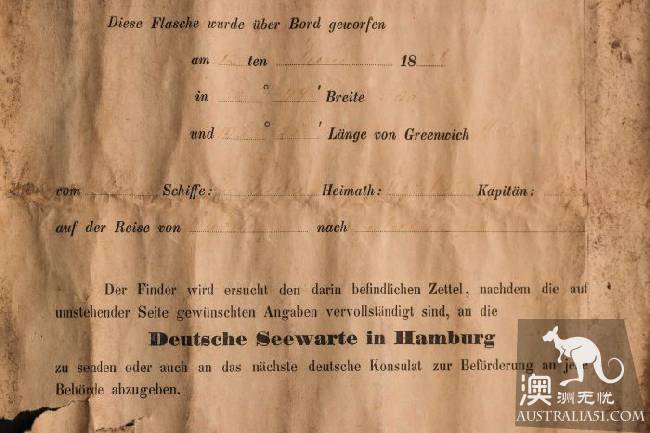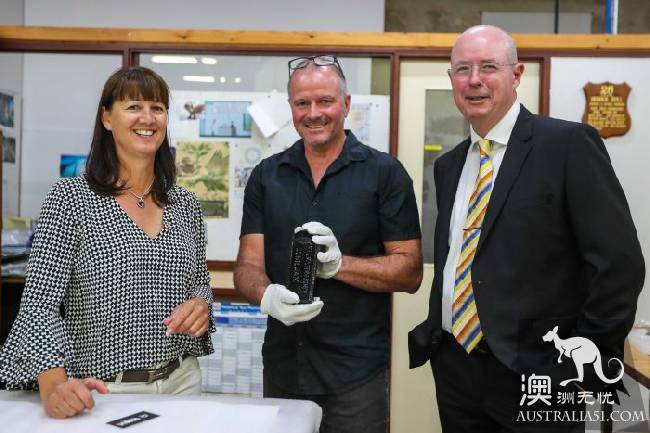A Perth family made a historic discovery on a beach in Western Australia.
Tonya Illman walks on a beach 180 kilometers north of Perth on Wedge Island, where she finds something in the sand.
"it looked like a lovely old bottle, so I picked it up and thought it might look good on my bookshelf." She said.
But when a wet, rope-bound piece of paper fell out of the bottle, Mrs. Illman soon realized that she might have discovered something unusual.

"my son`s girlfriend found a note when she cleaned up the sand in the bottle." She said.
"Let`s take him home and let it dry. When we opened the note, we found that it was a form printed in German with very light German handwriting on it. "
The note, which falls on June 12, 1886, said it had dropped the sea from the German three-mast ship, Paula, 950km from the coast of Western Australia.
After doing some research online, the Illman think they have either made significant historical discoveries or become victims of an elaborate scam.

Between 1864 and 1933, tens of thousands of bottles were dropped on German ships, each with a table in which the captain wrote the date, coordinates, and detailed course of the voyage.
This is part of the experiment conducted by the German Naval Observatory to better understand the current.

On the back of the note, the sender asked the person who found the bottle to write when and where they had found the bottle and send it back to the German naval observatory in Hamburg or to the nearest German embassy and consulate.
The Illman family took their findings to the Western Australia Museum, and Ross Anderson, assistant curator of marine archaeology, conducted a series of investigations.
He thought it was a Dutch gin bottle from the mid-and late-19th century, and the paper in it was cheap paper produced in the 19th century.
To determine the authenticity of the bottle, he contacted his Dutch and German counterparts for help.
Colleagues there compared the handwriting on the form to the nautical diary written by Captain Paula.
"unusual discoveries require unusual evidence to prove." Dr. Anderson said.
Inconceivably, in the nautical diary, the captain recorded a bottle thrown into the sea on June 12, 1886. The date and coordinates fit perfectly with the note in the bottle. The handwriting is identical in terms of cursive style, italics, fonts, spacing, weight of writing, case and numbering. "
It was not discovered until 132 years after it was thrown into the sea, the oldest known message in a bottle in the world. The second oldest is 108.
Kym and Tonya Illman lent their findings to the Western Australia Museum in the next two years.


